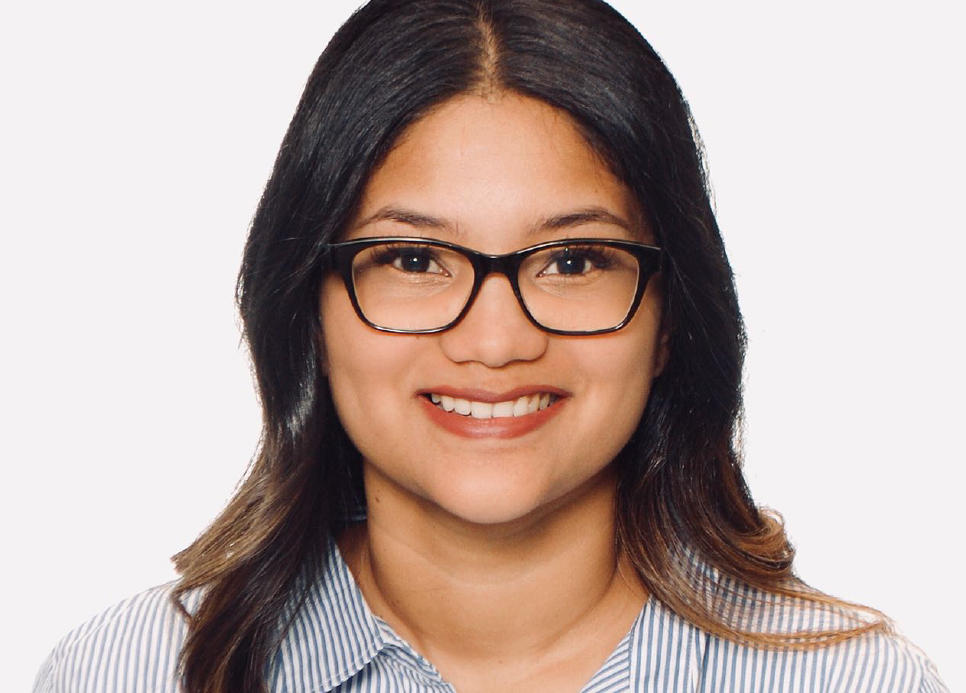Gathering Place Now Open
A new Gathering Place for health professions learners, faculty and staff to learn about and honour Indigenous perspectives of well-being and healing is now officially open at Women’s College Hospital (WCH). A virtual tour and welcoming ceremony was held on Tuesday, November 17th.
The Gathering Place is a partnership between the Temerty Faculty of Medicine’s Office of Indigenous Health and the Centre for Wise Practices in Indigenous Health (CWP-IH) at WCH.
As part of the celebration, professors Lisa Richardson, Vice-Chair, Culture and Inclusion, for the Department of Medicine and Chase McMurren, Indigenous Medical Education Theme Lead for the MD Program were joined by Temerty Faculty of Medicine Dean Trevor Young and WCH President and CEO Heather McPherson.
“This is not just a physical space. The idea of having smudging, smelling sweetgrass and sage and hearing the drum song that represents the heartbeats of our mothers is an act of decolonizing a space and an institution. It’s also about creating figurative space in these institutions, which have been so unwelcoming,” said Richardson, who is also the Strategic Lead in Indigenous Health for Temerty Faculty of Medicine and Women’s College Hospital. “It is about a place where Indigenous people can come and feel safe and at peace, valued, loved and respected and where Indigeneity is uplifted and celebrated.”
“Let’s consider how we can all create more safety for Indigenous People to come forward and be welcome to share their gifts and Sacred Medicines with one another and with all of us,” said McMurren. “In order to have safety, we all need to have humility and bring as much humble presence as possible, acknowledging that we all have work and healing to do.”
Kawennanoron (Cindy White), Rosary Spence and Kateri Gauthier performed the opening and closing drum and songs as well as the invocation.
The Gathering Place will help improve the experience for Indigenous learners by providing a culturally safe space to come together, socialize and study.
Elders, Knowledge Keepers, educators and community supports will be available to engage ceremonial practices, provide access to traditional medicines and facilitate educational and community-centred activities such as healing, counselling, workshops and symposiums.
The Gathering Place will also host learner and faculty meetings, talking circles and academic activities.
The creation of the Gathering Place one of the actions Temerty Medicine is taking to respond to the Truth and Reconciliation Commission of Canada’s Calls to Action as well as University of Toronto’s TRC Steering Committee, Answering the Call Wecheehetowin.
The official opening was celebrated during University of Toronto’s Indigenous Education week, which runs from November 16 to 20th.

Optimize this page for search engines by customizing the Meta Title and Meta Description fields.
Use the Google Search Result Preview Tool to test different content ideas.
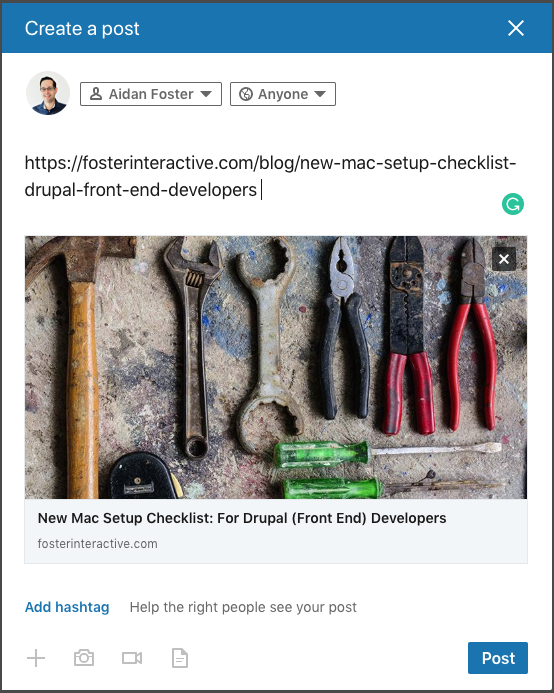
Select a Meta Image to tell a social media platform what image to use when sharing.
If blank, different social platforms like LinkedIn will randomly select an image on the page to appear on shared posts.
Posts with images generally perform better on social media so it is worth selecting an engaging image.
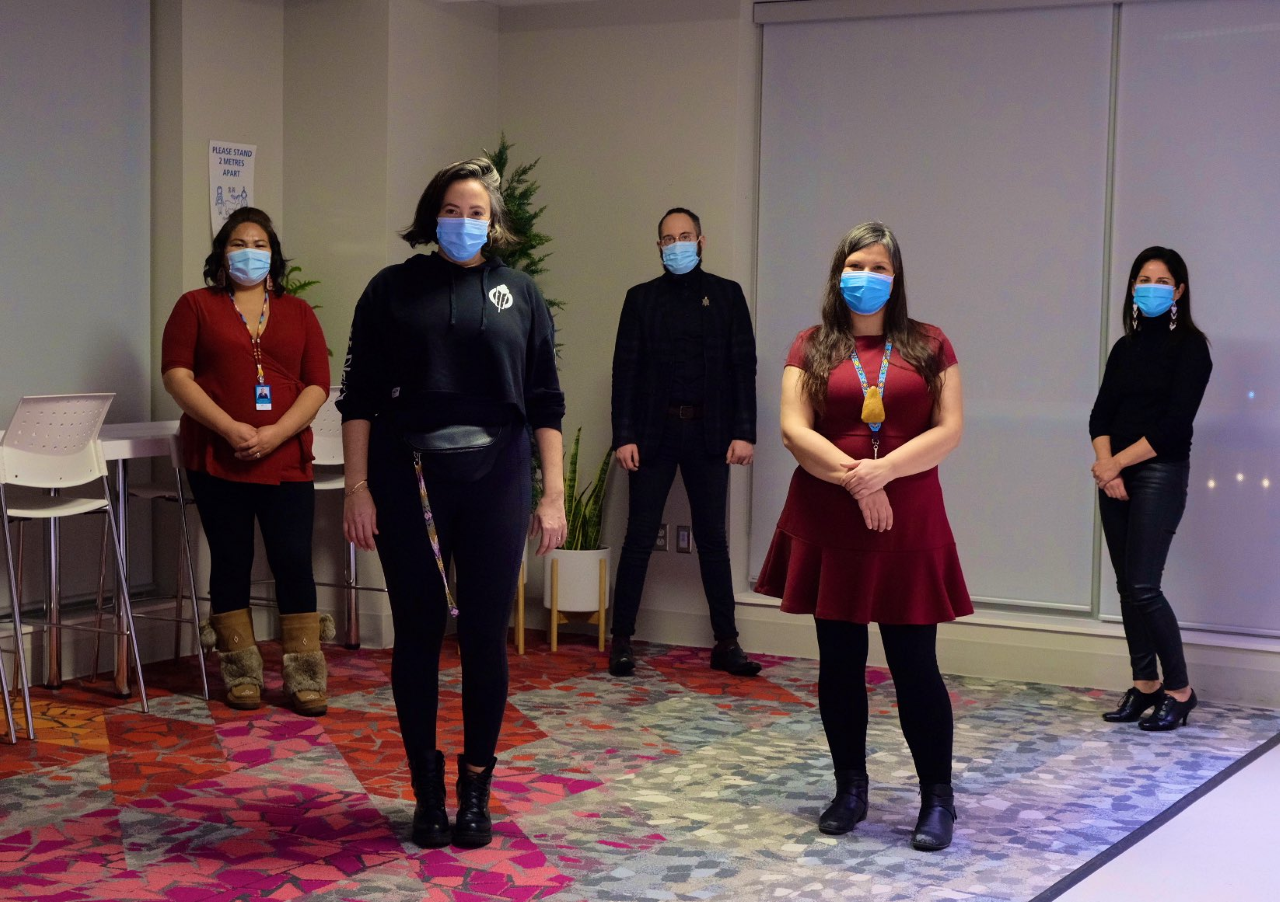
COVID-19: Your Safety and Responsibility
Ongoing Updates from the Faculty of Medicine - MedEmail
All faculty, staff and students
- Register to Receive Building Cleaning Updates - Oct. 28, 2020
- Memo: In-Person Clinical Placement Re-Entry - Jul. 8, 2020
- FAQ Readiness to Return to the Clinical Environment - Jul. 8, 2020
- COVID-19, Allyship and EDI Supports - Apr. 9, 2020
- Memo from Lynn Wilson - COVID 19 updates - Apr. 3, 2020
- Placement pause for non-paid and pre-licensure clinical learners will continue until Monday 6th July 2020 - Apr. 2, 2020
- Message to Faculty of Medicine Appointed Staff from Acting Dean Spadafora - Mar. 13, 2020
- CCME Moves to a Virtual Format - Mar. 13, 2020
- U of T Faculty, Staff & Librarians Jan. 29, 2020
- All Chairs and Business Officers for All Faculty - Jan. 28, 2020
- Senior TAHSN Leaders - Jan. 27, 2020
- Learners, Teachers and Educational Leaders - Jan. 23, 2020
Continuing Professional Development
Graduate Programs and Research
- Research Restart: Undergraduate Research Project Students - Aug. 13, 2020
- Recap of Previous COVID-19 TAHSN Communications for Basic Science Chairs - Apr. 13, 2020
- International Applications Open for Fall, Summer Undergrad Research Cancelled - Mar. 31, 2020
- Eligibility Update - Toronto COVID-19 Action Initiative - Mar. 25
- Coronavirus (COVID-19) Research FAQ - Ongoing
- Academic Continuity for Final Oral Examinations (FOEs) - Mar. 20
- Message to PhD Candidates: Final Oral Examinations (FOE) - Mar. 19
- Message to Graduate Students from SGS Dean, Joshua Barker - Mar. 17
- Message to Graduate Chairs, Graduate Coordinators and Administrative Staff - Mar. 17
- TRP: COVID-19 Updates - Mar. 16, 2020
- COVID-19 Research Update - Mar. 15, 2020
- MSc Genetic Counselling Program: COVID-19 Updates - Mar. 15, 2020
- Message to Graduate Students - Mar. 14, 2020
- Graduate Students - Jan. 27, 2020
MD & Postgraduate
- Readiness for Return to the Clinical Environment – FAQs and Student Declaration Form - Jun. 19, 2020
- Joint Statement to all Ontario Medical Students on Visiting Student Electives - Jun. 18, 2020
- Joint Statement to all Ontario Medical Students - Apr. 17, 2020
- COVID-19: Equity, Allyship and Supports for Learners - Apr. 17, 2020
- Visiting Student Electives Update for Clinical Chairs - Apr. 7, 2020
- Clerkship Clinical Activities Update - Mar. 26, 2020
- Class of 2T0 update - Mar. 26, 2020
- UGME Deans: Letter to Learners (AFMC) - Mar. 20, 2020
- MD Program Foundations Curricular Modifications - Mar. 20, 2020
- Statement on the AFMC Student Portal for 3rd Year MD Program Students - Mar. 20, 2020
- COVID-19 Update for PGME trainees, training programs and learning institutions - March 17 | Additional information
- Update for PGME trainees, training programs and learning institutions - Mar. 17, 2020
- MD Program Year 3 Clinical Placements (update) - Mar. 16, 2020
- MD Program: Pausing Year 3 Clerkship - Mar. 14, 2020
- Urgent Clinical Learning Changes for MD Students - Mar. 13, 2020
- MD Program: Foundations Curricular Modification - Mar. 13, 2020
- MD Program: Clinical Learning Changes for 2T0 Class - Mar. 13, 2020
- CANCELLATION OF ELECTIVES: Coronavirus and Visiting Electives from all Canadian schools - Mar. 13, 2020
- Postgraduate Trainees: POSTPONEMENT of Spring Certification Exams - Mar. 13, 2020
- Restricted Duties and Local Placements for Faculty of Medicine Clinical Learners - Mar. 11, 2020
- Learners from Canadian Medical Schools Taking Electives at U of T - Mar. 9, 2020
- Procedure Change: International Travel for Medical Learners - Mar. 4, 2020
- Mandatory screening form for MD students returning from any international travel - Mar. 4, 2020
- MD Program Students - Jan. 27, 2020
- PGME Residents and Fellows - Jan. 27, 2020
Medical Radiation Sciences
- Message to the MRS Graduating Class 2020 - Mar. 30, 2020
- Message to Year 1 & Year 2 MRS Students - Mar. 30, 2020
- MRS: Information on Final Exams - Mar. 18, 2020
- MRS: Clinical Placements for May - Mar. 18, 2020
- MRS YEAR 3 - Clinical Placements - Mar. 15, 2020
- Medical Radiation Science: Program Year 3 - Clinical Placements - Mar. 14, 2020
- MRS Program Classes Transition to Online Only effective March 16th, 2020 - Mar. 13, 2020
- MRS: Restricted Duties for Faculty of Medicine Clinical Learners - Mar. 12, 2020
- Message to MRS Learners re: COVID-19 Information and Preparedness - Mar. 2, 2020
- MRS Learners: Emergency Preparedness - Coronavirus Outbreak - Jan. 26, 2020
Physician Assistant Program
- COVID Update: 2nd Year PA Program Students - Mar. 27, 2020
- PA Program COVID Update: ProctorU_Year 1 Students - Mar. 20, 2020
- PA program COVID-19 Update: 2nd Year message - Mar. 19, 2020
- PA program COVID-19 Update: 2nd Year Students - Mar. 16, 2020
- PA Program COVID-19 Update: Preceptors - Mar. 16, 2020
- PA Program COVID-19 Update: 1st Year Students - Mar. 14, 2020
- Message to Physician Assistant Program learners - Mar. 12, 2020
- PROCEDURE CHANGE: International Travel for Physician Assistant Trainees - Mar. 5, 2020
- PA Students, Preceptors and Faculty - Jan. 27, 2020
Rehabilitation Sciences
- Update from the Chair (OT) COVID-19 - Mar. 31, 2020
- COVID-19 Update - First Day Online Learning - Mar. 16, 2020
- SLP Year 1 Unit 3 Message - Mar. 16, 2020
- UToronto Year 1 SLP Students in Clinical Placements, Clinical Educators and Site Coordinators - Mar. 13, 2020
- Occupational Science and Occupational Therapy: COVID-19 information - Mar. 12, 2020
- Physical Therapy: Clinical Internships and COVID-19 Class of 2020 - Mar. 12, 2020
- Physical Therapy: Message to Clinical Sites - Mar. 12, 2020
- Physical Therapy: COVID-19 Update Class of 2021 - Mar. 12, 2020
- Speech-Language Pathology: COVID-19 Update on Classes and Clinical Placements - Mar. 12, 2020
- Physical Therapy: Procedure Changes: International Travel for Learners - Mar. 5, 2020
- Screening form for Physical Therapy Learners - Mar. 5, 2020
- Speech-Language Pathology: Procedure Changes: International Travel for Learners - Mar. 5, 2020
- PT Students, Faculty and Staff - Jan. 28, 2020
- OS/OT Learners and Faculty - Jan. 27, 2020
Resources:
- Council of Ontario Faculties of Medicine (PDF)
- Ontario Hospital Association
- Public Health Agency of Canada
- Public Health Ontario
- Sunnybrook Health Sciences Centre: Do I Need a Mask?
- Toronto Public Health
- University of Toronto
- World Health Organization
For further information and support please contact your local site supervisor or program lead.

Optimize this page for search engines by customizing the Meta Title and Meta Description fields.
Use the Google Search Result Preview Tool to test different content ideas.

Select a Meta Image to tell a social media platform what image to use when sharing.
If blank, different social platforms like LinkedIn will randomly select an image on the page to appear on shared posts.
Posts with images generally perform better on social media so it is worth selecting an engaging image.

Shining a Light on Support for Students
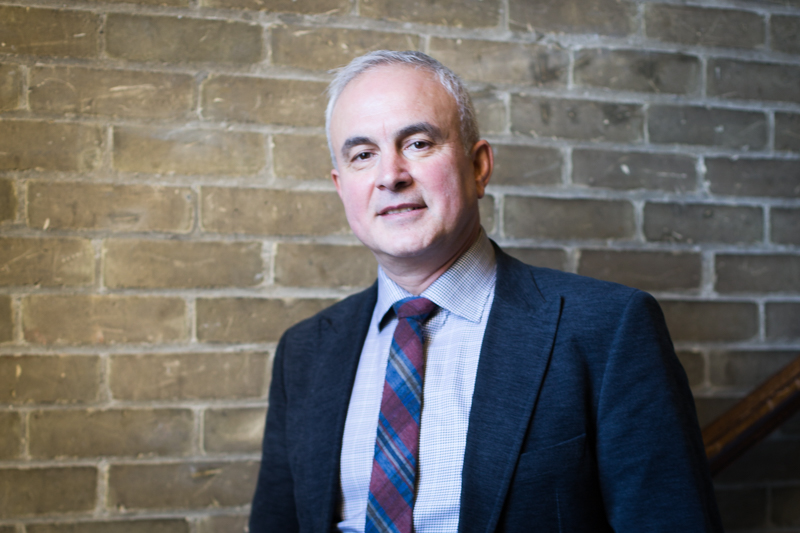 According to the Canadian Federation of Medical Students, between one-third to half of all learners experience burn out, depending on their stage of training.
According to the Canadian Federation of Medical Students, between one-third to half of all learners experience burn out, depending on their stage of training.
The Office of Health Professions Student Affairs (OHPSA) works to help equip trainees with resilience skills and provides resources to support wellness and mental health.
“Medical students are part of a curriculum that moves quickly,” says Professor Tony Pignatiello, Associate Dean, OHPSA. “If a student has to wait a month to see a counsellor, the curriculum moves on. If there’s an exam in that time, that student has essentially two choices: defer the test until they feel better or potentially fail it and ask for forgiveness later. It’s important for us to respond quickly and integrate with our students’ academic needs.”
To do this, OHPSA employs a range of strategies to meet every level of need.
RESILIENCE CURRICULUM
The Resilience Curriculum, which equips students to assess and develop their own resilience is delivered through online modules and workshops. It emphasizes the importance of reaching out for help and breaking down stigma. OHPSA developed this element of the Foundations Curriculum in collaboration with Post Graduate Medical Education and a committee of students. So far, the modules are available in the MD Program’s first three years.
Samantha Yang, a third-year medical student, helped shape this part of the MD Program as a Resilience Curriculum Coordinator. In her role, she worked with about 30 students from across all four years of the program, looked for ways to increase resilience training and helped develop and evaluate content to support that goal.
Students also played a key role in producing Monologues in Medicine, a series of videos that relate to topics in the Resilience Curriculum. The series features students, residents and physicians who share their personal stories of challenges they overcame in medical school. Clips from the monologues are integrated into the curriculum content and every year new monologues are added to the library.
“As students, we really appreciate all the effort that’s gone into developing this curriculum and mental health services,” Yang says. “But we recognize there’s a limit to the efficacy of these services based on the current health care environment. So, it’s exciting to part of the culture shift.”
The Resilience Curriculum has drawn attention from other medical schools and academic disciplines as well. OHPSA receives requests from universities looking for help to introduce similar programs.
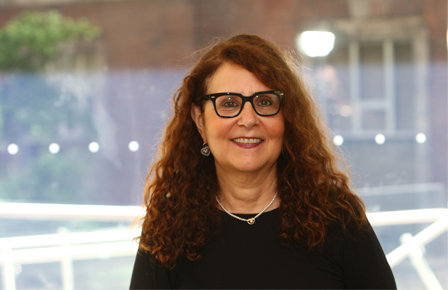 “We’re ahead of the game,” says Shayna Kulman-Lipsey, OHPSA’s Manager of Counselling Services. “I presented at an international conference, where there was a lot of discussion and research on deteriorating mental health among medical students as they move through training but there was little about what was being done to address it.”
“We’re ahead of the game,” says Shayna Kulman-Lipsey, OHPSA’s Manager of Counselling Services. “I presented at an international conference, where there was a lot of discussion and research on deteriorating mental health among medical students as they move through training but there was little about what was being done to address it.”
SUPPORT DURING EDUCATIONAL TRANSITIONS
Beyond the Resilience Curriculum, wellness is integrated into the student experience through Transition to Clerkship, a two-week course that helps learners develop the knowledge, skills and attributes to help them as they become clinical clerks in their third year of study. The course also features a session on maintaining mental health. Similar content is included in Transition to Residency, which runs during the final fourteen weeks of the MD Program.
This year, the MD Program has introduced three core curriculum days, which brings third year clerkship students back together from their hospital sites to focus on career choices, Canadian Residency Matching Service preparation and wellness and mental health.
The first session — held this past November — touched on mindfulness and the importance of healthy nutritional and sleep habits. The next two sessions are planned for 2019.
OHPSA’s work, says Pignatiello, is part of a continuum of supports available to students and learners at all levels of training. He regularly meets with his counterpart at the Post MD Program’s Office of Resident Wellness to explore opportunities to collaborate. Together, the groups organize a bi-annual Physician Wellness Symposium.
COUNSELLING SERVICES
Health professions students are welcome to meet with the office’s personal counsellors. Daytime and after-hours appointments are available and, in urgent situations, can be scheduled on a same-day basis. The service is open to any registeredmedical student downtown or at the Mississauga Academy of Medicine for as long as they need during their training, in person or remotely. Students can refer themselves for counselling,which is confidential and helps with a diverse range of concerns.
OHPSA also actively reaches out to students through Check Your Pulse. Through the initiative, students are invited to visit the office to chat about how medical school is shaping up for them. Originally offered to first-year students, Check Your Pulsegrew this year to include second-year students, too. As well, the program’s timeline has expanded to be offered throughout the fall.
“It’s a good time to check in, see if they’re experiencing academic issues or anxiety, which is quite common,” says Kulman-Lipsey. “It’s also a way to connect about other issues like whether or not students have a family doctor.”
For students who need additional support, OHPSA can provide or accept referrals to and from other services including the university’s Health and Wellness Centre or other health care providers. OHPSA counsellors can remain involved in a student’s care and liaise between the office and outside health professionals.
COLLABORATING FOR A HEALTHIER CULTURE
Earlier in 2018, OHPSA also established the Mental Health Dialog Q &A series, which features physicians speaking about their experiences with mental health and wellness.
The office also works with a variety of student-led groups who share the goal of supporting emotional well-being among learners. Among these groups is Student Health Initiatives and Education (SHINE). It promotes wellness, academic skills development and career exploration through activities like seminars, workshops and an annual wellness challenge campaign done in collaboration with the Canadian Federation of Medical Students.
“Mental health affects us all, but it’s still a topic a lot of people aren’t comfortable talking about,” says Allison Chen, SHINE’s 2T1 General Coordinator. “As medical students and future physicians, we need to take care of ourselves to take care of others. We need to create a community where it’s okay to not be okay and to ask for help.”
Other student-led organizations include ArtBeat, Meds Mindfulness and After Hours, which offers students opportunities to talk to each other about their experiences and journey through medical school.
OHPSA also works with Faculty members, who are given information about signs that might indicate a student may be experiencing mental health difficulties. These can include any deviation from a student’s usual behaviour — one example would be a usually punctual student who starts to frequently run late. Another possible sign of trouble could be when a student strays from the class norms, like scoring notably lower than class averages.
“This equips faculty to check in on students. Or faculty members can remind the student about OHPSA’s services,” says Pignatiello.
Another mechanism for checking in with students is the MD Program’s updated absences policy. Students may have planned or unplanned absences from their studies. Although there is no formal cap on the number of days a learner may take, four unplanned absences or a total of eight absences will prompt a check-in from the program. The idea is to harmonize students’ autonomy and life/work balance with concern for their wellbeing.
In addition to helping support students on an individual level, OHPSA also works to nurture a safe learning environment. In partnership with the Diversity Office and students, OHPSA is helping to improve the process to report concerns surrounding harassment and discrimination. As well, OHSPA works closely with the Office of Accessibility to help students who may need accommodations while they study.
Another collaboration between OHPSA and the Office of Post MD Education is the work being done by Pignatiello and Heather Flett, Associate Director of the Office of Resident Wellness as co-chairs of the Optimizing the Learning Environment Working Group. This initiative is an important part of advancing the Faculty’s new strategic plan, which includes the goals to improve the learning environment and advance wellness throughout the Faculty. One of the group’s first goals is to establish a unified approach to promoting a culture of respect and professionalism.
When it comes to wellness supports, Pignatiello says the services available have been like hidden gems — treasures he hopes to share as widely as his team can.

Optimize this page for search engines by customizing the Meta Title and Meta Description fields.
Use the Google Search Result Preview Tool to test different content ideas.

Select a Meta Image to tell a social media platform what image to use when sharing.
If blank, different social platforms like LinkedIn will randomly select an image on the page to appear on shared posts.
Posts with images generally perform better on social media so it is worth selecting an engaging image.
Erin Howe

New Generation CAR T-Cells For Cancer Therapy
With CAR T-cell therapy one of the promising technologies emerging in targeted cancer treatment, University of Toronto scientists have taken a step forward in improving the potential effectiveness of this therapeutic approach.
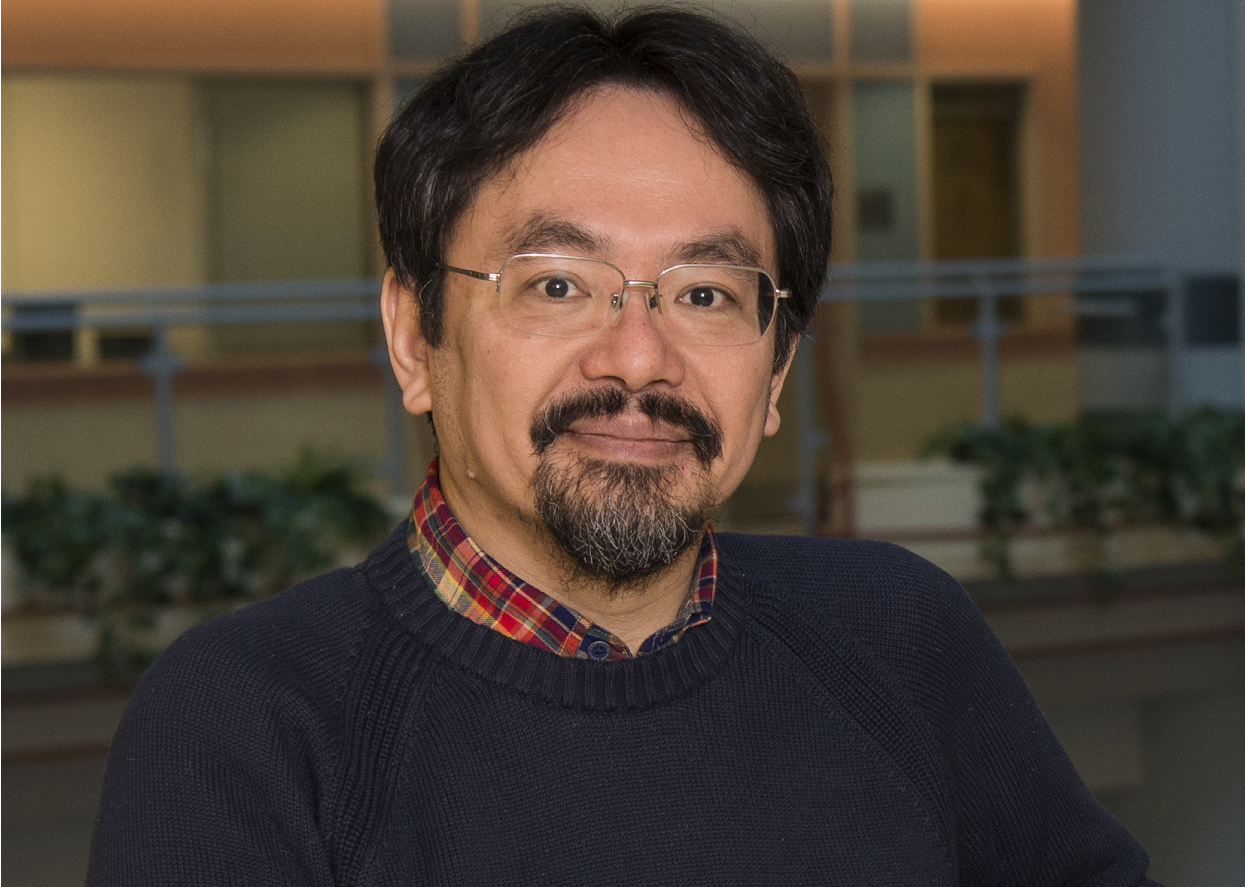
In a paper published this week in Nature Medicine, U of T immunology professor Naoto Hirano – working with colleagues at University Health Network (UHN) and Takara Bio in Japan – outlines a novel method for production of these “living drugs”. The team’s new generation CAR T-cells multiply and remain viable as living cells over a longer period, and show greater effectiveness in fighting specific tumours in immune-deficient mice with human-derived cancer.
“We are hopeful that this technique can move forward with further study to improve the beneficial effects of CAR T-cell therapy for patients,” said Prof. Hirano, a hematologist and oncologist, who is an Associate Professor of Medicine in the Department of Immunology at U of T, and Senior Scientist at Princess Margaret Cancer Centre, UHN. “The benefits of this targeted cancer therapy are very promising, if we can refine our laboratory constructs to optimize their therapeutic effect and minimize any unexpected consequences.”
CAR T-cell therapy was approved by the U.S. Food and Drug Administration in 2017 for the treatment of certain leukemias and lymphomas. The approach involves taking T cells (a type of immune cell) from a patient’s blood and changing them in the laboratory to target that patient’s specific cancer cells. The lab adds a gene for a special receptor called a chimeric antigen receptor (CAR) into the T cells, then grows millions of those CAR T cells, which are then given to the patient by infusion.
While the treatment is very effective in killing specific cancer cells, some patients have experienced serious side effects, such as very high fevers and dangerously low blood pressure, especially as the CAR T-cells multiply in the body in the days after treatment. That’s why scientists are continuing to refine this powerful anti-tumour approach.
Prof. Hirano’s new-generation CAR design can be used in any CAR T-cell, independent of the specific tumour it targets. UHN has filed a patent application related to this study on which Prof. Hirano is the lead inventor. Funding for this research was provided by a number of sources, including the Canadian Institutes of Health Research, the Ontario Institute for Cancer Research, BioCanRX Catalyst Program, the Princess Margaret Cancer Foundation and others. The study was partly sponsored by Takara Bio, Inc.

Optimize this page for search engines by customizing the Meta Title and Meta Description fields.
Use the Google Search Result Preview Tool to test different content ideas.

Select a Meta Image to tell a social media platform what image to use when sharing.
If blank, different social platforms like LinkedIn will randomly select an image on the page to appear on shared posts.
Posts with images generally perform better on social media so it is worth selecting an engaging image.
Linda Quattrin

The Dr. Marguerite (Peggy) Hill Lecture on Indigenous Health
Google map
TOWARDS A TRAUMA INFORMED UNDERSTANDING OF RECONCILIATION
Attend the 2017 annual Dr. Peggy Hill Memorial Lecture in Indigenous Health. Dr. Hill was the Physician in Chief of Medicine at Women's College for many years.The Medical Alumni Association, in partnership with the Office of Indigenous Medical Education, is hosting this lecture from 5 to 6 pm, followed by a reception from 6 to 7 pm.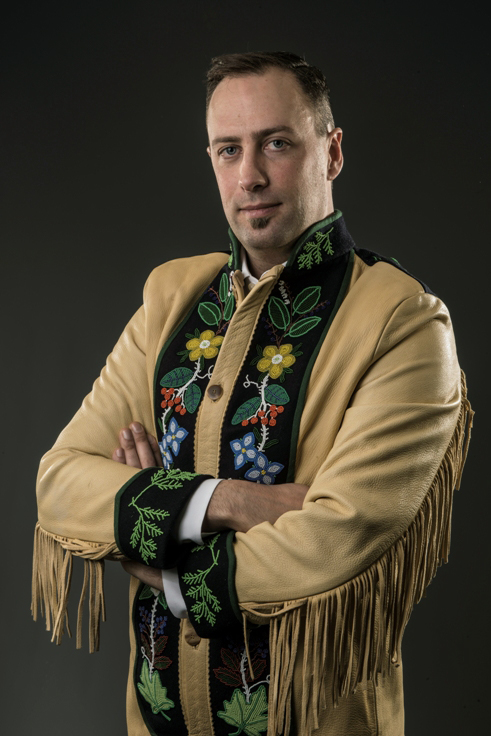
This year's lecturer is Ry Moran. As the first Director of the National Centre for Truth and Reconciliation (NCTR), it is Ry's job to guide the creation of an enduring national treasure – a dynamic Indigenous archive built on integrity, trust and dignity. Ry came to the Centre directly from the Truth and Reconciliation Commission of Canada (TRC). On the TRC’s behalf, he facilitated the gathering of nearly 7,000 video/audio-recorded statements of former residential school students and others affected by the residential school system. He was also responsible for gathering the documentary history of the residential school system from more than 20 government departments and nearly 100 church archives – millions of records in all. Ry is a proud member of the Métis Nation of Manitoba.
Registration is required, but this event is sold out. However, it will be webcast online beginning at 5 pm on November 23.

Optimize this page for search engines by customizing the Meta Title and Meta Description fields.
Use the Google Search Result Preview Tool to test different content ideas.

Select a Meta Image to tell a social media platform what image to use when sharing.
If blank, different social platforms like LinkedIn will randomly select an image on the page to appear on shared posts.
Posts with images generally perform better on social media so it is worth selecting an engaging image.
New Donnelly Centre Director on 'Supporting the Next Breakthroughs in Biomolecular Sciences'
Professor Stephane Angers has been appointed director of the Donnelly Centre for Cellular and Biomolecular Research for a five-year term beginning September 1, 2021.
Angers, who is currently Associate Dean of Research in the Leslie Dan Faculty of Pharmacy, holds appointments with the Leslie Dan Faculty of Pharmacy and the Department of Biochemistry at the Temerty Faculty of Medicine. He is also the founding co-director of the multi-disciplinary Precision Medicine Strategic Initiative (PRiME) at U of T.
Hailing from Quebec, Angers completed a BSc in Biochemistry at McGill University and PhD in Biochemistry at the Université de Montreal before undertaking a postdoctoral fellowship at the Howard Hughes Medical Institute, University of Washington in Seattle.
He joined U of T in 2006, establishing the Angers Lab to study the Wnt family of growth factors in stem cells during development, tissue regeneration and cancer. This work has uncovered novel therapeutic targets, leading the development of new drugs that are advancing towards the clinic both as anti-cancer treatments and as regenerative medicine strategies in non-malignant disorders.
Angers, who previously held a Canada Research Chair II in functional architecture of signal transduction, has received more than $10 million in peer reviewed research support and has published more than 100 peer-reviewed publications in top-ranked journals.
Following the announcement of his appointment to the Donnelly Centre, Angers spoke with Temerty Medicine writer Blake Eligh about his research, the importance of collaboration and his vision for the Donnelly Centre over the next five years.
Until now, your primary appointment has been to the Leslie Dan Faculty of Pharmacy. How does your experience there relate to your new role with the Donnelly Centre?
I’ve spent the last 15 years with the faculty of pharmacy. During that time, we have elevated the research capacity and impact of the faculty by creating internal funding programs, building a research office from the ground up, and creating the pan-faculty PRiME initiative that brings together people from across U of T who are interested in drug development and identification of novel therapeutics.
Over the years, I have worked closely and collaborated with several groups at the Donnelly Centre. Although I’m already ingrained in the community, I’m also a bit of an outsider with a fresh perspective that will help move the Donnelly Centre into its next phase.
How do your scientific interests intersect with those of the Donnelly Centre?
We work with Wnt proteins, which are critical stem cell factors during development, but also for adult tissue homeostasis. My group is working to understand the cellular mechanisms they influence and how they are defective in diseases. Another focus is more broadly directed at identifying genetic vulnerabilities of various high fatality cancers for which treatments are limited, such as glioblastomas and pancreatic cancers.
The research interests of my group are therefore at the intersection of research interests of several researchers at the Donnelly Centre who are studying genetic interactions, cancer cell vulnerabilities, stem cell biology and regenerative medicine, and who leverage and develop enabling technologies.
Working at the Donnelly Centre will elevate what my lab can do, and, in return, I hope I can elevate the research of others. It’s a fantastic place with enormous possibilities.
What do you see as the strengths of the Donnelly Centre?
The Donnelly Centre is internationally recognized for its role as a discovery engine for fundamental science.
The centre brings some of the best scientists in Canada together under one roof. This creates an environment where world experts and younger trainees from different disciplines – engineering, genetics, computational science and molecular and stem cell biology – can cross-pollinate and bring unique perspectives to new fields of research.
One key reason for the success of the Donnelly Centre is the sustained investment in scientific infrastructure and support of highly qualified personnel and staff members. It takes expertise to run cutting-edge technology platforms, not only to understand the equipment but to also analyze and integrate the data.
What is the Donnelly Centre’s relationship to the scientific ecosystem in Toronto?
We have something really special here that differentiates U of T from other universities in Canada. The high density and quality of scientific activities makes Toronto one of the global epicenters of research discoveries.
Think of any field of research or a disease, and there’s a local expert, access to reagents or patient samples—it’s all here within a few city blocks.
It’s what attracted me to U of T 15 years ago. We need to foster this ecosystem and make it more integrative through intra-city collaborations between the Donnelly Centre and the exciting science happening in the Discovery District, elsewhere at the university, at hospitals and research institutes.
Leveraging this network will allow us to recruit and retain the best scientists in the world and the best graduate students, and to enable further research discoveries at the Donnelly Centre.
What is your vision for the Donnelly Centre?
I see the Donnelly Centre as a discovery engine that provides the essential knowledge and technologies that will help us solve the problems of tomorrow.
The best advances of medicine – let’s take for example immunotherapy that provides new hope for cancer patients or the advent of mRNA vaccines that helped save the world from the SARS-CoV2 pandemic – would not have been possible without the fundamental discovery science describing the function of T cells or the development of methods leading to improved mRNA stability and delivery.
There have been spectacular advances made here over the past 15 years to better understand how eukaryotic cells function. Donnelly Centre scientists have pioneered large scale studies that revealed how proteins interact together to perform specific biological functions, how genes connect to orchestrate cellular behaviors, and mapped genes required for cancer growth.
With this increasing knowledge of gene and protein functions, the next tasks include understanding the cellular diversity that form each of our tissues and identifying the cell types involved in disease phenotypes and how we can manipulate cell functions to promote tissue regeneration or treat diseases.
The Donnelly Centre is poised to tackle these problems which require close collaborations between engineers, stem cell biologists, functional genomicists, computational biologists and the integration of cutting-edge technologies that are mastered and invented by our scientists.
How will your leadership support the work of Donnelly Centre researchers?
The Donnelly Centre exists because of the vision of philanthropist Terrence Donnelly and his belief that foundational science is important, and that discovery research will solve the problems of tomorrow.
Our ideas are unlimited, but to remain internationally renowned and performing at the cutting-edge of discovery research, we need to fuel those ideas and support the next breakthroughs in biomolecular sciences.
As director, I’m excited to engage with stakeholders and potential donors, and to take an active role advocating for foundational sciences in Canada.
We are home to some of the best scientists in Canada and their research teams. I think we have a very compelling story to tell.

Optimize this page for search engines by customizing the Meta Title and Meta Description fields.
Use the Google Search Result Preview Tool to test different content ideas.

Select a Meta Image to tell a social media platform what image to use when sharing.
If blank, different social platforms like LinkedIn will randomly select an image on the page to appear on shared posts.
Posts with images generally perform better on social media so it is worth selecting an engaging image.
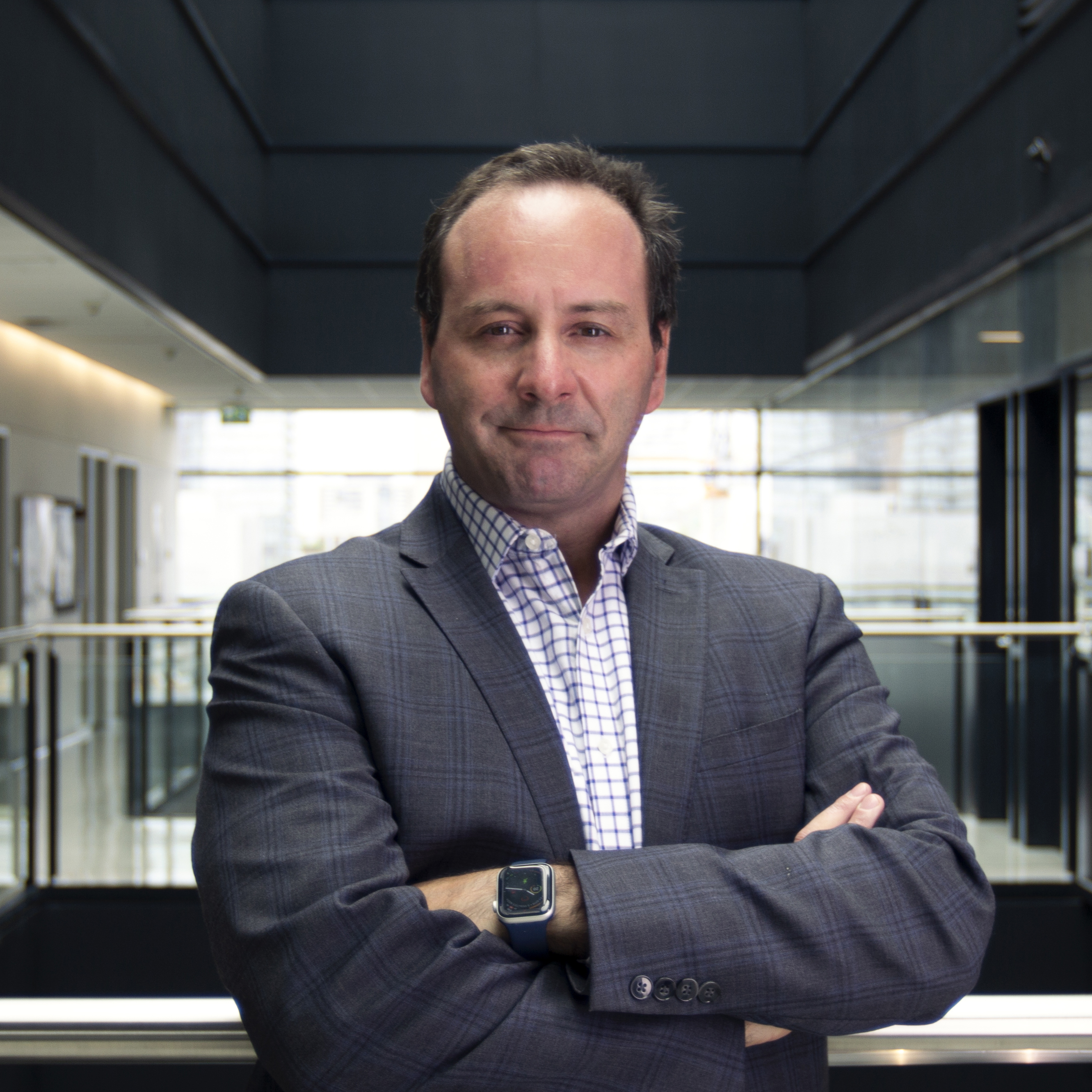
U of T Hosts Vaccine Pow Wow at Varsity Stadium
The University of Toronto's Varsity Stadium was transformed into the site of a vaccine pow wow over the weekend, with volunteers dancing and playing hand drums while community members received their shots.
Steve Teekens, the executive director of Na-Me-Res, a Toronto emergency shelter for Indigenous men, said the clinic was held to provide First Nations, Inuit and Métis people with a culturally safe place to receive their vaccinations. Nearly 200 people received their first or second dose of the Pfizer-BioNTech vaccine at the clinic on Saturday, which operated from 10 a.m. to 4 p.m.
Na-Me-Res partnered with other health-care groups – Seventh Generation Midwives Toronto, Well Living House at St. Michael's Hospital and the Centre for Wise Practices in Indigenous Health at Women's College Hospital – to create an Indigenous COVID-19 response program, called Auduzhe Mino Nesewinong (which means "place of healthy breathing" in Anishinaabemowin).
“One of the things that happened during this pandemic is that it exposed some of the inequities within the health sector, particularly for Indigenous people,” says Teekens. “So, there was some hesitancy from our community to access some of these services, especially if they had experiences with discrimination and racism before.”
Teekens and others helped organize the mass clinic, with logistical support from U of T, in order to speed up vaccinations. He says he contacted Associate Professor Suzanne Stewart, director of the Waakebiness-Bryce Institute for Indigenous Health (WBIIH) at the Dalla Lana School of Public Health, who agreed to support the Indigenous-led COVID-19 response.
“Suzanne connected me with the appropriate folks at U of T and they never said no, ever,” says Teekens. “It just amazed me. They just wanted to know how they could accommodate it and make it work for us.”
Stewart and Clayton Shirt, an Elder and traditional knowledge keeper at Dalla Lana and the WBIIH, greeted people who came for their shots at the entrance.
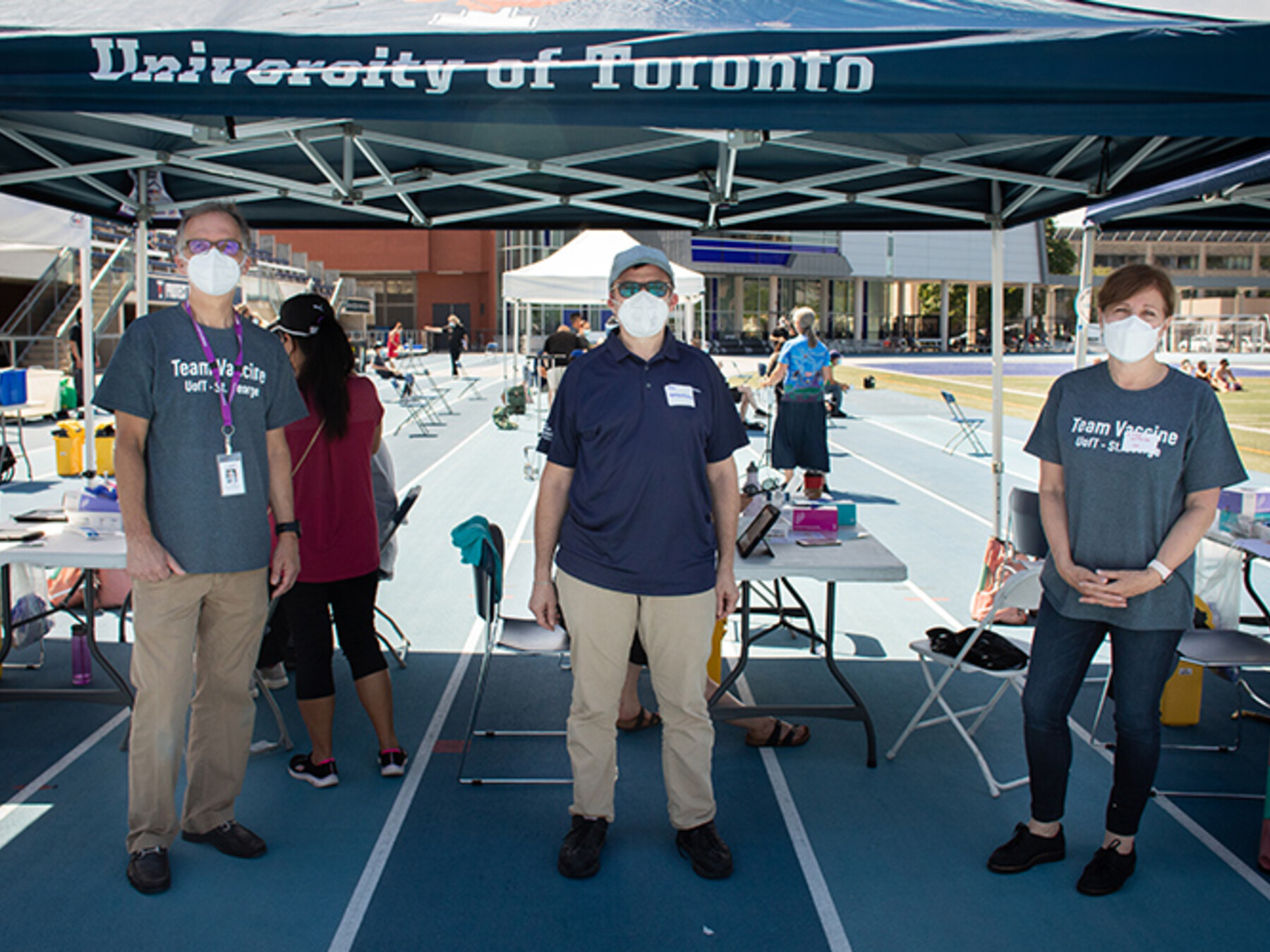
Volunteers from WBIIH, the Temerty Faculty of Medicine, Lawrence S. Bloomberg Faculty of Nursing and the Leslie Dan Faculty of Pharmacy helped with the vaccinations.
Suzanne Shoush, co-medical director of Auduzhe Mino Nesewinong and the first Indigenous health faculty lead in the department of family and community medicine in the Temerty Faculty of Medicine, was the clinic's medical lead.
“Na-Me-Res usually has pow wows on the Saturday closest to National Indigenous People's Day, but they had to be paused because of the pandemic,” Teekens says. Varsity field provided space for pow wow drummers and dancers, as well as Métis and Inuit performers.
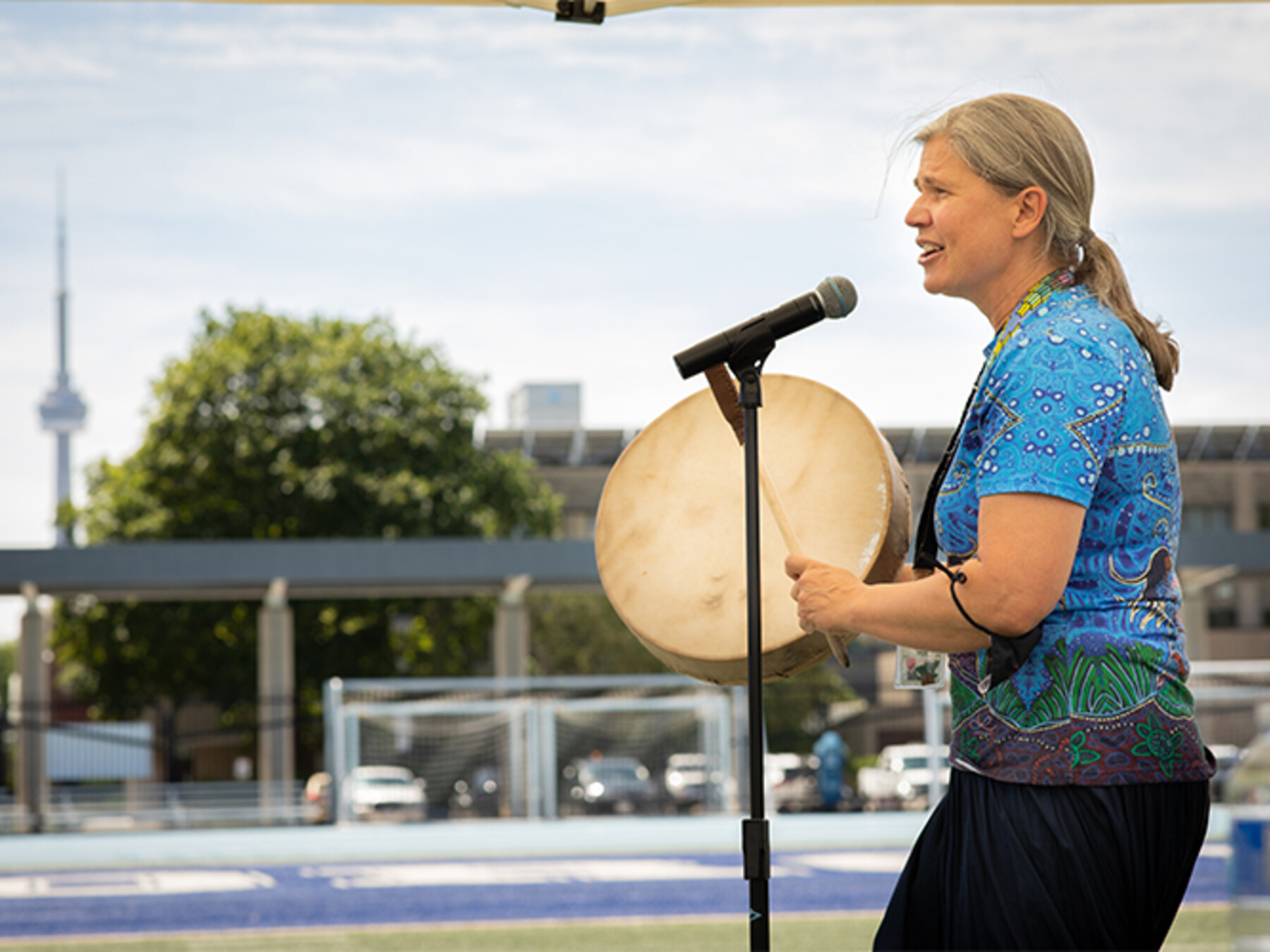
Janet Smylie, a professor at the Dalla Lana School of Public Health, physician at St. Michael's Hospital and one of Canada's first Métis physicians, volunteered as both an observer at the waiting area, where people sat after receiving their shots, and as a performer.
At the clinic, Cheryl Regehr, U of T's vice-president and provost, said she was proud of U of T's support for the pandemic response, including Dalla Lana’s and WBIIH's work with Indigenous communities.
“The Waakebiness-Bryce Institute for Indigenous Health at the Dalla Lana School of Public Health has been instrumental in ensuring that the particular needs of Indigenous people in this health crisis are being accounted for,” she said, citing advocacy for Indigenous vaccine access on-and-off reserves, helping create a culturally safe vaccine rollout strategy and operating clinics in co-operation with local Indigenous organizations.
"Today's vaccine pow wow is both a celebration of these efforts, and a recognition of how Indigenous health is critical to the country's health."
For Devon Bowyer, a former Varsity Blues soccer player and graduate of Dalla Lana’s master of public health program who helped run the clinic, the event marked a return to the stadium he knows from his days on the pitch.
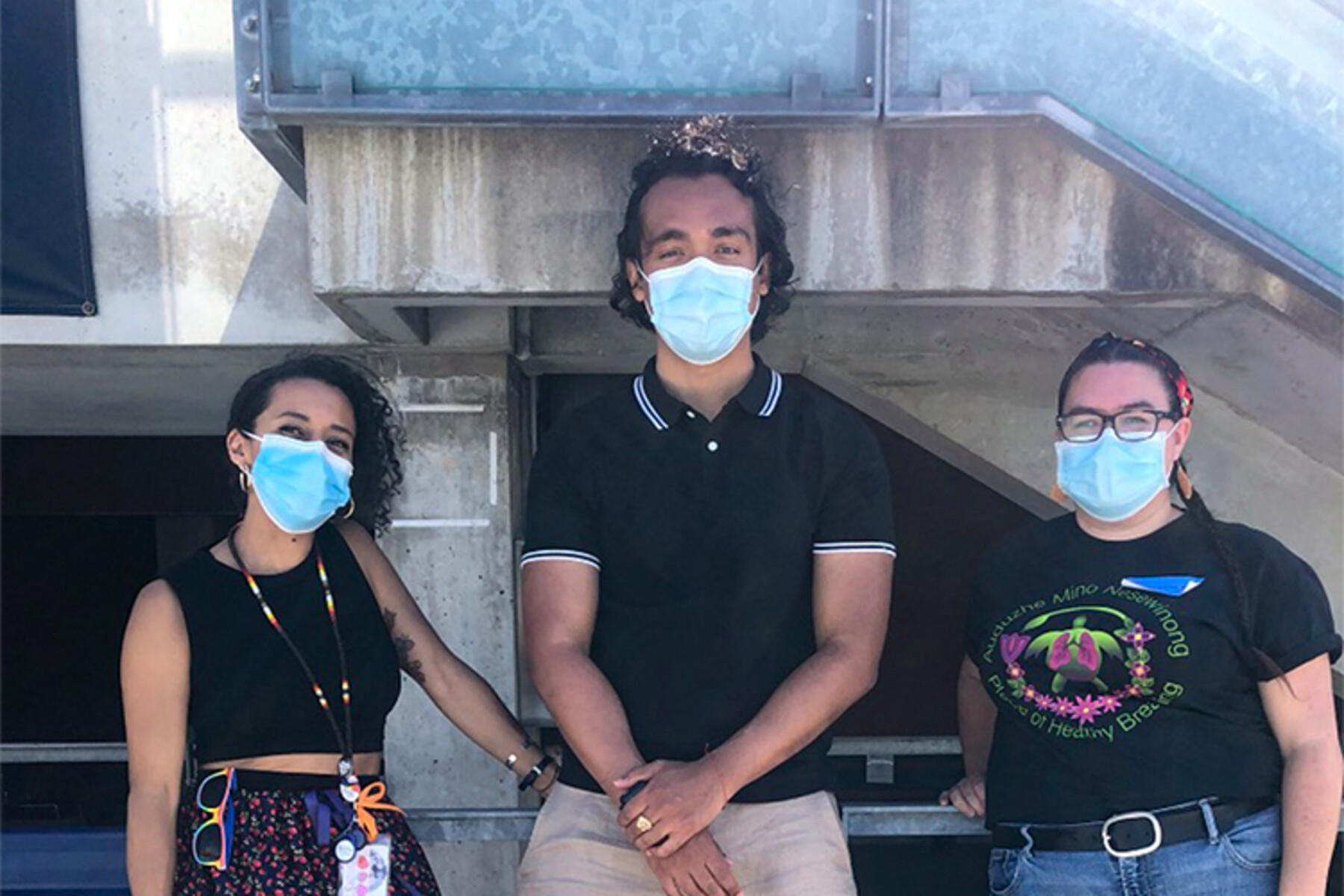
“It was like a full circle moment. It was amazing to do special work helping out the community in a culturally safe and culturally appropriate way,” he said.
“It's really important that these types of initiatives are led by Indigenous academics, clinical workers and community organizations. I was aiming to be a good ally, trying to support the clinic the way I could.”
Bowyer worked closely with Stewart during his graduate studies on community-based projects in the Greater Toronto Area, helping out with previous clinics within the University Health Network. He began working as the logistics manager at Auduzhe about a month ago.
“This is part of the reason you go into public health,” he says. “You want to be there for people, especially those who are under-represented or marginalized.”
Beth Ali, executive director co-curricular athletics and physical activity programs, says she's pleased Varsity Stadium could host the clinic.
“As home to U of T’s Sport and Recreation division and the Varsity Blues, we know the importance of teamwork for success and if there’s anything this pandemic has taught us, it’s how much we are reliant on each other,” she says. “Through partnerships and co-operation such as this one, we are committed to providing resources to support the First Nations, Inuit and Métis community.”

Optimize this page for search engines by customizing the Meta Title and Meta Description fields.
Use the Google Search Result Preview Tool to test different content ideas.

Select a Meta Image to tell a social media platform what image to use when sharing.
If blank, different social platforms like LinkedIn will randomly select an image on the page to appear on shared posts.
Posts with images generally perform better on social media so it is worth selecting an engaging image.
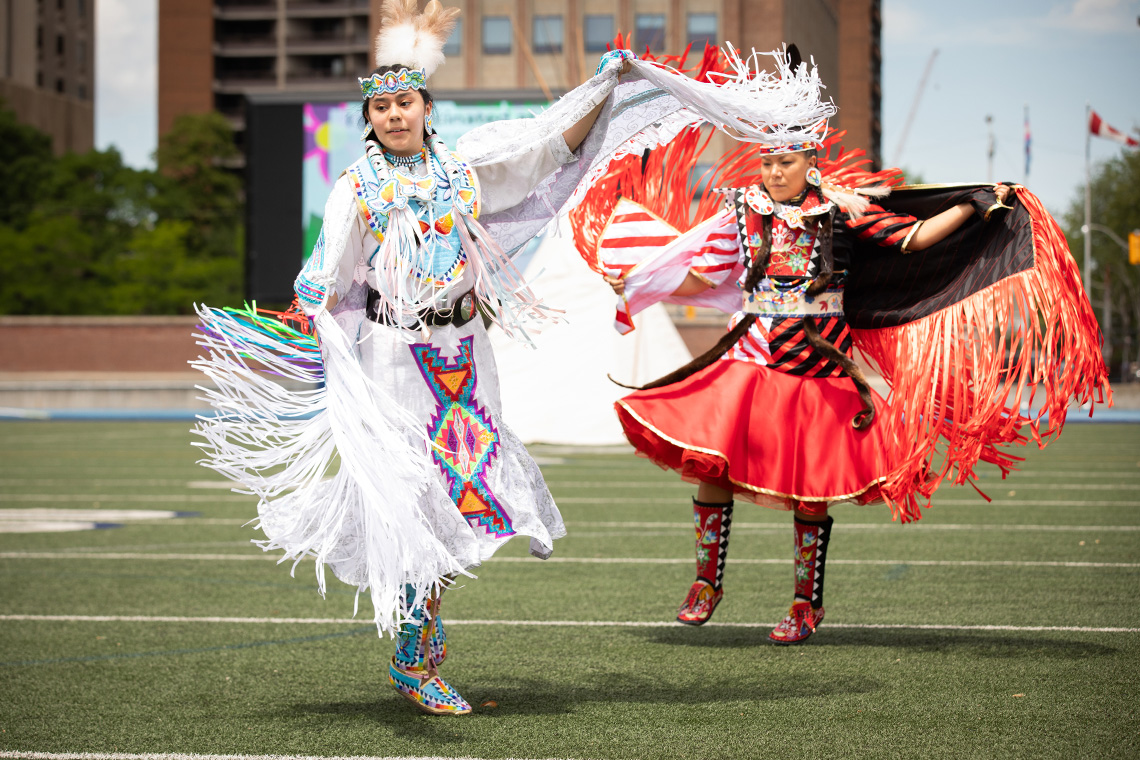
Toronto Academic Health Science Network Welcomes Humber River Hospital and Scarborough Health Network
The Toronto Academic Health Science Network (TAHSN) are delighted to announce the addition of Humber River Hospital and Scarborough Health Network as members.
Over the past 18 months, both organizations have provided exceptional leadership, in collaboration with TAHSN member institutions, in addressing the challenges of the COVID-19 pandemic. Their efforts have helped to ensure quality patient care and ongoing education of health professionals in Toronto.
“Humber River Hospital and Scarborough Health Network have demonstrated a clear commitment to TAHSN’s academic mission of excellence in care, health professions education, and innovation. We are thrilled to have these hospitals join TAHSN, enabling further collaboration and alignment across our academic network in the Greater Toronto Area” shared, Dr. Gary Newton, Chair of TAHSN and President & CEO of Sinai Health.
“Scarborough Health Network and TAHSN have a shared commitment to health education, to growing capacity in research, and to health system innovation. We are excited to be a member of TAHSN, and to bring our focus on community health, health equity, and population health research in diverse communities to the network’s academic and research collaborations broad contribution to healthcare innovation” said Elizabeth Buller, President and CEO of Scarborough Health Network.
“Humber River Hospital is pleased to be invited to be a member of TAHSN. As Canada’s first digital hospital, innovation and a commitment to research and academic excellence are a core part of our operations. The pandemic has clearly demonstrated the strength of health sector partnerships to achieve common goals. We look forward to the opportunity to contribute to and learn from other TASHN member hospitals and to collectively work towards improved health outcomes for our patients and broader community.” said Barb Collins, President and CEO of Humber River Hospital.
As part of membership, both organizations have committed to strengthening their existing affiliation relationship with the University of Toronto, and will work with the University in the coming year to achieve associate affiliation with the University of Toronto.
About Humber River Hospital
Humber River Hospital is one of Canada’s largest regional acute care hospitals, serving more than 850,000 people in the northwest GTA. Canada’s first fully digital hospital, Humber provides both in-patient and out-patient care, including cancer, cardiac and critical care, emergency services, dialysis, bariatric surgical services, women’s and children services, diabetes and mental health programs. Humber oversees the operation of 1100 beds, including more than 400 Reactivation Care beds the hospital manages in its two Reactivation Care Centres.
About Scarborough Health Network
Scarborough Health Network (SHN) is made up of three hospitals and eight satellite sites that serve one of Canada’s most diverse communities. SHN is shaping the future of care by working with our community partners to deliver equitable quality health care across Scarborough. Our programs and services are designed around the needs of one of Canada's most vibrant communities. We are home to North America's largest nephrology program, as well as the designated cardiac care and spine centre for Scarborough and surrounding communities to the east. We are proud to be a community-affiliated teaching site for the University of Toronto and partner with a number of other universities and colleges, helping to train the next generation of health care professionals.
About Toronto Academic Health Science Network
The Toronto Academic Health Science Network (TAHSN) is a dynamic network of academic health organizations providing leading edge research, teaching and clinical care. TAHSN serves as a leader in Canadian healthcare and is one of the largest, most productive academic health centres in North America as evidenced on a number of dimensions including academic standing, research activity/output, visionary collaboration and contribution to healthcare innovation. TAHSN is comprised of the University of Toronto and its full and associate affiliated academic hospitals, each of which hold national and international standing as leaders in their particular fields.

Optimize this page for search engines by customizing the Meta Title and Meta Description fields.
Use the Google Search Result Preview Tool to test different content ideas.

Select a Meta Image to tell a social media platform what image to use when sharing.
If blank, different social platforms like LinkedIn will randomly select an image on the page to appear on shared posts.
Posts with images generally perform better on social media so it is worth selecting an engaging image.
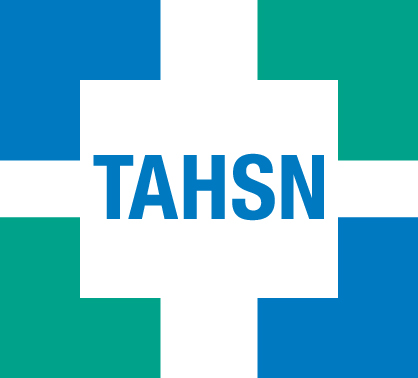
Not Forgetting Our History, But Celebrating Our Future
Last week’s announcement that 751 graves were discovered by the Cowessess First Nation at the Marieval Indian Residential School in Saskatchewan is yet another sad reminder of Canada’s legacy of genocide perpetrated against Indigenous communities. This follows the news last month that the remains of 215 children were found at the Kamloops Indian Residential School in British Columbia. As the Final Report of the Truth and Reconciliation Commission of Canada (TRC) warned, these heartbreaking discoveries are likely to be repeated as further investigations are done at other residential schools.
We must be aware of the intergenerational trauma suffered by Indigenous communities as a result of residential schools, as well as other discriminatory actions like the Sixties Scoop. At the same time, we must also recognize the deep sense of pain and anguish felt by Indigenous members of our community as a result of these announcements. We will continue to support our Indigenous colleagues while continuing to invest in long-term resources to make meaningful change and respond to the TRC’s Calls to Action. I am thankful for the many Indigenous leaders who are helping to guide us in this work. As Cowessess First Nation Chief Cadmus Delorme said last Thursday, “We all must put down our ignorance and accidental racism of not addressing the truth that this country has with Indigenous people.”
While we must not ignore or forget our tragic history, we can still feel a sense of optimism about our future and the people who will help write it. Among them are those faculty members who – effective tomorrow – will be promoted to new professorial ranks in Temerty Medicine. These promotions represent an important career milestone, but also recognize the incredible contributions these individuals have made to the Faculty as well as their fields and professions. This year, 166 faculty were promoted, including 96 who were promoted to associate professor (37 female, 59 male), and 70 who promoted to full professor (30 female, 40 male).
While 66 faculty were promoted based on their excellence in research, and 14 were promoted based on their sustained excellence in teaching, 86 were recognized for their excellence in creative professional activity (CPA). A critical way in which to appropriately evaluate the scholarly endeavors of clinical faculty, CPA provides flexibility to recognize excellence that may not be easily encapsulated in notions of research and/or teaching. As outlined in the Academic Promotions Manual, this includes contributions to…
- Professional innovation and creative excellence (i.e., making or developing of an invention, development of new techniques, conceptual innovations, or educational programs inside or outside the University)
- Professional practices (i.e., demonstration of innovation and exemplary practice will be in the form of leadership in the profession, or in professional societies, associations, or organizations that has influenced standards or enhanced the effectiveness of the discipline)
- Exemplary practice (i.e., practices that are illustrative to students and peers, establishes the professional as an exemplar or role-model for the profession, or shows the individual to be a professional whose behaviour, style, ethics, standards, and method of practice are such that students and peers should be exposed to them and encouraged to emulate them)
On behalf of the Temerty Faculty of Medicine, I want to extend my sincere congratulations to these newly promoted faculty members. I am proud of their achievements, and I am confident of the impact they will have on current and future generations of learners.
As was previously announced, I will briefly serve as Acting Provost of the University of Toronto beginning on July 1. Dr. Patricia Houston, our Vice Dean of Medical Education, has generously agreed to serve as Acting Dean in my absence, in addition to her regular duties. Dr. Houston is a dedicated educator and an inspired and capable leader. I am very grateful for her willingness to take on these additional responsibilities.
And, as summer has now arrived, I hope you have an opportunity to take a break from your work and studies. Spend time with family and friends, and restore your energy as we approach a new academic year in a few weeks. Your commitment and resolve have helped see us through a challenging year. We all need and deserve a vacation. Please enjoy the summer and, again, join me in congratulating those faculty who received academic promotions this year.
Trevor Young
Dean, Temerty Faculty of Medicine
Vice Provost, Relations with Health Care Institutions
University of Toronto

Optimize this page for search engines by customizing the Meta Title and Meta Description fields.
Use the Google Search Result Preview Tool to test different content ideas.

Select a Meta Image to tell a social media platform what image to use when sharing.
If blank, different social platforms like LinkedIn will randomly select an image on the page to appear on shared posts.
Posts with images generally perform better on social media so it is worth selecting an engaging image.
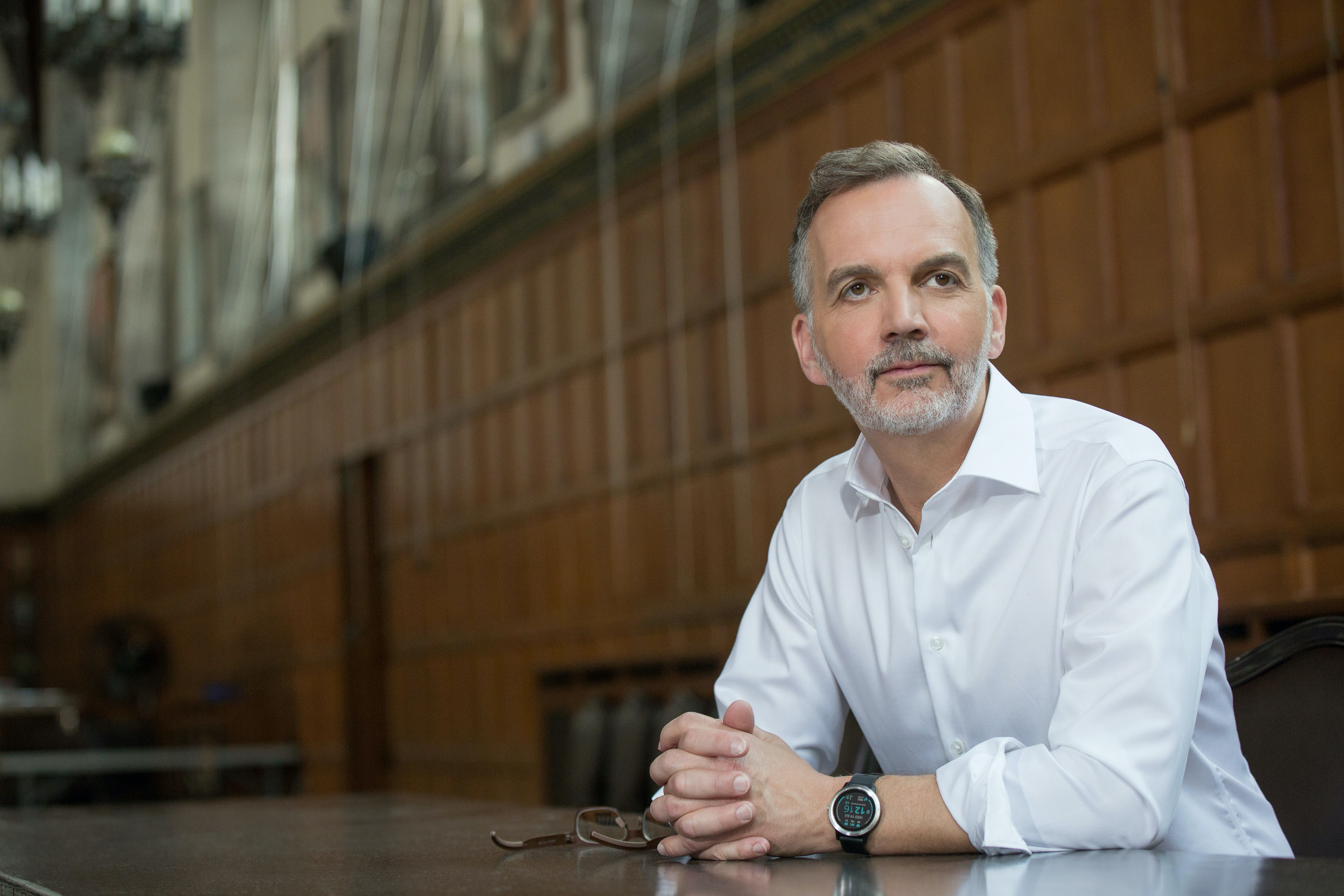
Nadine Narain: From Here to Emergency
When she graduated with a Master of Science from the Department of Occupational Science and Occupational Therapy (OS & OT) in 2016, Nadine Narain couldn’t have imagined working in an emergency department.
Narain, who is now an OS & OT adjunct lecturer, has a varied career that has included work with children, in home health care, acute care and palliative care.
Today, she’s also part of what she hopes will become a growing trend: occupational therapists (OTs) who work in the emergency department (ED) to help reduce the length of stay and unnecessary hospital admissions. As well, OTs help facilitate safe discharges and prevent hospital re-admissions by ensuring patients have adequate supports at home and in the community.
Recently, Narain spoke with writer Erin Howe about her work.
What kind of work do you do at the hospital?
I’m part of an interdisciplinary team at Sunnybrook Health Sciences Centre. We facilitate safe discharges into the community. To do this, I conduct functional assessments, especially for patients with functional or cognitive decline. I collaborate with the team to ensure patients are safe to return home. If they’re not, we make the recommendations.
In discharge planning for patients returning home, I provide education and recommendations on resources to optimize their safety, independence and well-being. For example, any equipment they may need, like grab bars for their bathtub or a walker, support for personal care, meal preparation, medication management and other basic daily activities.
As part of my assessment, I also check in with caregivers to ensure they feel supported and have resources to cope with burnout.
As well, I might see people who may have a concussion or mild traumatic brain injury. I help assess them from a cognitive perspective for what kinds of follow up might benefit them, and provide education on managing with their symptoms.
Our goal is to set people up for success at discharge so they’re less likely to return to the hospital.
During the pandemic, I’ve observed an increase in issues like domestic violence, falls, functional decline and failure to cope at home. These were all pre-existing issues, but they came to the forefront as a result of the pandemic.
You mentioned the team you belong to is fairly new. Is there growing demand for occupational therapy expertise in emergency departments?
When I was in school, I didn’t imagine this kind of opportunity. But when I saw that posting, I thought it was very exciting.
At this point, there aren’t many occupational therapists working in Canadian emergency departments, but I hope to see that change in the future. There’s no doubt we have a vital role in the ED to optimize quality of care.
You’ve also worked with people recovering from COVID. How can occupational therapy help people through that journey?
I worked in a COVID-designated ICU and field hospital and had a front-seat view of the impact COVID-19 has on physical and cognitive functioning.
Patients can become so deconditioned they have difficulty completing basic tasks like personal care, walking and getting out of bed. My role was to help them regain their independence and ensure they were safe enough to be discharged home or to rehab.
Some patients also have difficulty with memory and concentration following their illness. I also often provide education on how to manage post-COVID symptoms and therapy to advance peoples’ functional abilities.
Can you tell me a little more about the work you do in the community and with people experiencing homelessness?
Many of my clients in community are vulnerable. They’re homeless, low-income or frail and manage complex health issues and struggle with psychosocial issues.
Sometimes, a person may not have a home address, so I’ll meet them in the street or in a place that feels safe and convenient for them.
I've met a client before in a pharmacy. He had an issue with his walker’s handle height not being appropriate for him. So, I arranged to meet him where he picks up his medications and I adjusted the walker and chatted with him to see how things were going.
I also meet clients at their group homes or at a hospice. In those settings, I help provide education on safe functional mobility, determine what a client’s equipment needs are and ensure they receive it.
What sparked your interest in OT?
I’m inspired by my parents’ compassion and empathy for others, especially when I reflect on the time they spent as caregivers for some of our loved ones.
During my undergrad, I had the privilege of working with Emerita Professor Judith Friedland, an icon in my field. She posted an opportunity to work in her lab and I felt like the stars had aligned. I worked with her on her book, Restoring the Spirit: the beginnings of occupational therapy in Canada, 1890-1930. The experience cemented my interest. She remains an inspiration for her advocacy, leadership and compassion.
As a student, I co-founded a student chapter of a non-profit organization, Global Brigades, which led a project in rural Honduras to build local capacity for rehabilitation care. Deb Cameron, one of my many mentors at U of T and OS & OT’s International Field Work Coordinator, was a key support.
Lawrence Loh, a professor at the Dalla Lana School of Public Health’s Centre for Global Health, provided guidance on sustainable, ethical and responsible volunteering, which opened my eyes to working with vulnerable and multicultural populations here in Canada.
My previous research supervisor and mentor Andrea Duncan continues to be a support to me as well.
What’s the most rewarding part of your work?
The most rewarding element of my work is to be able to remove barriers for my clients in the community to live safely, independently and with dignity. Ultimately, these things help prevent people going to the hospital, which has taken on new importance during the pandemic.
Working in palliative and end-of-life care within the community has been really meaningful over the last few years.
I help clients adapt to changing goals and relieve distress they may be experience at that point in life while dealing with a terminal illness. And I work closely with the Palliative Education and Care for the Homeless (PEACH) team, where I'm able to provide person-centered care to vulnerable populations.
I feel privileged to help clients live with dignity and independence.

Optimize this page for search engines by customizing the Meta Title and Meta Description fields.
Use the Google Search Result Preview Tool to test different content ideas.

Select a Meta Image to tell a social media platform what image to use when sharing.
If blank, different social platforms like LinkedIn will randomly select an image on the page to appear on shared posts.
Posts with images generally perform better on social media so it is worth selecting an engaging image.
